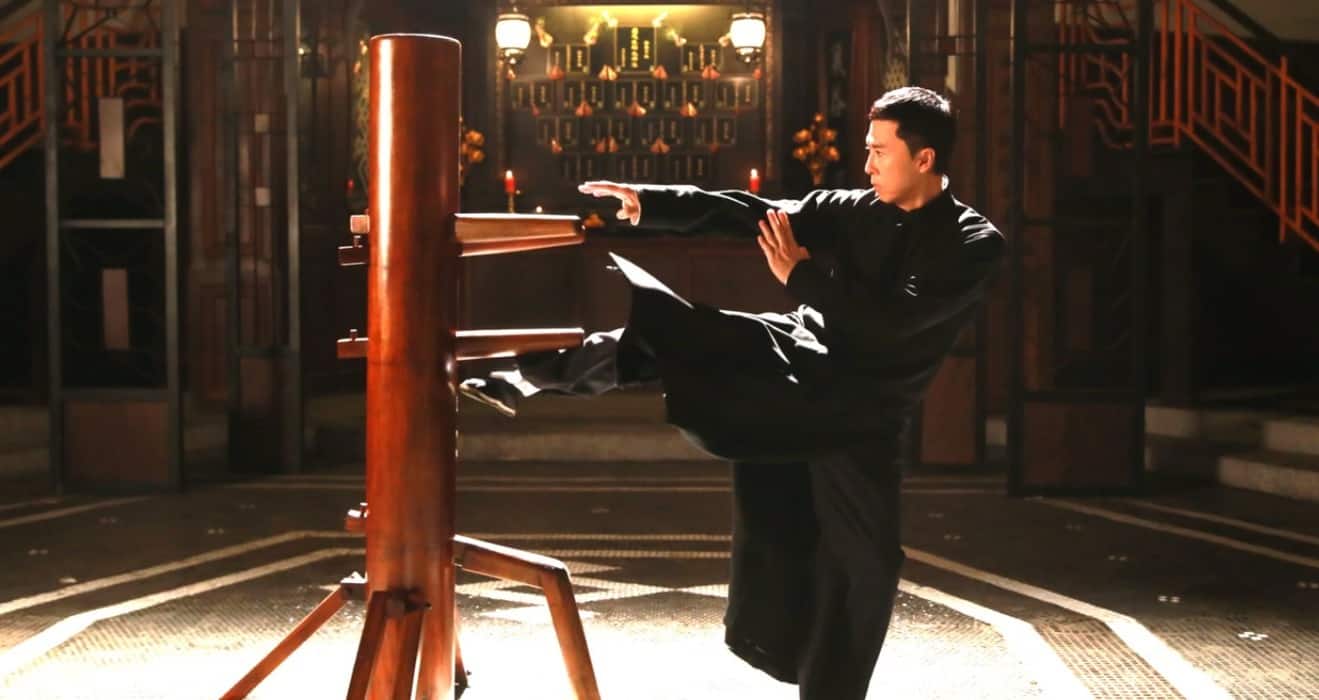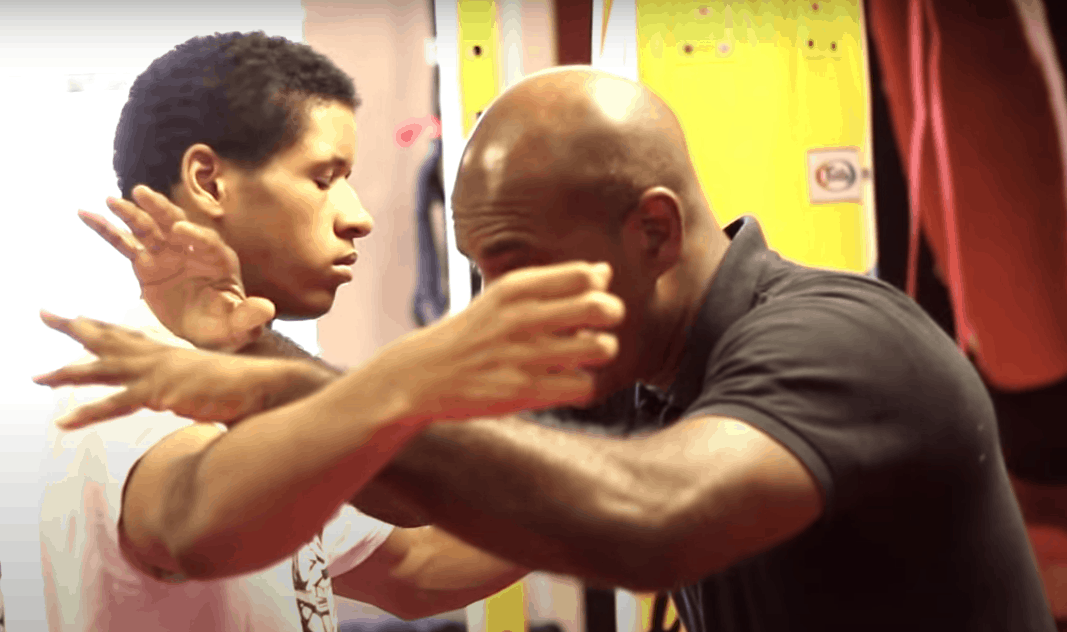
Before we can even start to answer whether Wing Chun is effective in a real fight or as a self-defense mechanism, we might need to answer what it is in the first place. So, what is Wing Chun? Wing Chun is a traditional Southern Chinese Kung Fu style. It was refined in Hong Kong and specializes in close contact combat. Quick punches and kicks are seen in Wing Chun, which makes it appear somewhat impressive, but is it any good in self-defense? Let’s find out.
Wing Chun is effective in a real fight since it is a unique martial art designed to provide self-defense using both offensive and defensive techniques simultaneously. Practitioners are taught to use quick punches, fast kicks, and a powerful defense, along with coordinated agile stances and footwork. In order for Wing Chun to be effective in a real fight, the practitioner must have an understanding of range and know how to have a guard that’s not particularly obvious. Fighters must be able to take hits without falling into flight mode or freezing in fear – if applied properly, this will make Wing Chun highly effective as a self-defense practice.
What can be said about Wing Chun can be said about any form of martial art. If you don’t know how to use it effectively in a “real fight” scenario, it’s not going to be any good. If you do wish to use Wing Chun effectively in a real fight, practice and learn the art with self-defense in mind. If you want to learn more about Wing Chun as a form of self-defense, read on.
How Effective Is Wing Chun In A Real Fight Or As A Self-Defense Practice?
It is one thing to say that a certain martial art can be used for self-defense, but the real clincher – the answer everyone is looking for – is how effective it is going to be. Some forms of martial art are more effective than others. You might want to choose a martial art that is the most effective in a real fight, if you wish to protect yourself and those you love.
When considering how effective a martial art is going to be in a real fight, we need to consider the nature of the fights in question. Let’s take for instance, street fights or bar fights that randomly occur through aggression. These usually start from a distance but get closer as the attacker gets aggressive verbally, gets close enough to push and punch. It’s much the same with a mugging. They might be no warning of the attack as there is in a bar or street fight, but the attacker will get close enough to you, to attack.
In terms of Wing Chun, this is actually ideal as it is close combat form of martial art. In order to be effective in apply the moves and tactics, your attacker or opponent needs to be fairly close to you. They can be close enough to grapple you, except with your speed and Wing Chun knowledge; they won’t be able to carry out their planned, up-close-and-personal attack.
Here’s What YOU’RE NOT Told About Real Fighting in WING CHUN
What Makes Wing Chun Effective In Self-Defense?
If you hop onto Google or Quora to do a bit of research on the effectiveness of Wing Chun, you will notice that those who practice it are quite poetic. They will describe it as a “beautiful way to engage in violence” and speak of the effortless flow from gentle movement to violent attack! We get it, Wing Chun is a poetically beautiful means of self-defense, but how is it actually such a good form of self-defense?
I read a really interesting take on Wing Chun by a member of Quora, but the general idea is as follows… Wing Chun is an effective form of self-defense because it is balanced, direct, and creative/innovative and more.
Let’s take a look at how these aspects make Wing Chun effective in self-defense.
Balance
When practicing Wing Chun, the practitioner’s center of mass is always under careful control. Rotating your form and leveraging gravity are used to generate powerful force. This force can be used to deliver powerful strikes through limbs. You might think that using gravity will displace your center and it does, but only in an up-down direction. The hips and torso are rotated in order to provide effective striking and defense opportunities. This type of rotation allows the practitioner to remain firmly on his feet while accelerating weight, without displacing center balance. The energy is therefore powerful, but wholly balanced. This is essential in a fight where you need to physically stand your ground when striking or avoid falling when struck or pushed.
Direct
The objective of using Wing Chun is to create unbalance in your opponent’s center. You don’t need to specifically hit your opponent to do that. The point is never to chance a limb that your attacker is flailing at you. Use your energy to redirect limbs, trap them, or deflect them. You need to do what you can and not attempt what you can’t or what seems risky/impossible. Remember that you need to guard your balance during this, so do not lean your torso and do not shift your weight from one foot to the other. Also, don’t twist your hips. Simply remain firmly in position without being stiff. Remain relaxed, ready, pre-emptive. Effective use of Wing Chun means no nervous behavior and a good structure at all times. Relaxed muscles are more reactive and effective than muscles that have been held tense for long periods.
Creative / Innovative.
Being creative with Wing Chun means attuning yourself with that which is around you. Being sensitive to the movement of an opponent will help you to defend yourself against it. Channel the force of your opponent against him. For instance, when your arm is being pushed on one side, your punching can be faster and harder on the opposite side.
The main objective of Wing Chun is to attack the center of your opponent while using as little energy and motion as possible.
Distance
The key to Wing Chun is to get in close and personal, this renders your simultaneous blocks and strikes more effective while disarming the attackers ability to really throw a punch or kick with force. The scenarios obviously also defends on whether the attacker has a weapon, in which case getting closer is still key if you’re quick enough, but focusing on disarming the weapon as a main objective.

Does Wing Chun Actually Teach Self Defense & How to Apply It
One of the first things you need to realize is that while many classes teach Wing Chung techniques, they don’t teach it in a way that makes it effective for self-defense or sport. It is best to check with the school you are applying at, whether or not they will teach Wing Chun self-defense mechanisms. The good news is that there are instructors and schools out there that do teach it as a form of self-defense.
What’s brilliant about Wing Chun as self-defense includes the following:
The Technical Structure Of The Art Of Wing Chun
Wing Chun is designed to include strategic defensive blocking and trapping. Practitioners are taught to have a strong forward focus in order to effectively jam or trap attacker’s limbs, to buy enough time to attack. The way in which these techniques are structured, is quite innovative as they rely on the body’s bone alignment and not on sheer muscular strength alone. This means that you don’t have to be bigger than your assailant in order to “win” the fight or get away.
Wing Chung Teaches To Offend And Defend Simultaneously.
Wing Chun teaches practitioners that every offense has a defense that happens at the same time. At the time of blocking, you are also striking. Imagine an incoming attack deflected with a strike, by cutting the very angle it is coming in on, That’s Wing Chun. Being able to work like this makes a Wing Chun practitioner with self-defense knowledge quite a force to be reckoned with.
Trapping Is A Highly Effective Self-defense Mechanism
Trapping is actually a technique that the sporting martial art world feels holds no water, because it is better suited to self-defense. This makes it one of the most effective Wing Chun methods of self-defense. In an attack scenario, the attacker is usually within close proximity, which makes them the ideal candidate for trapping. It is used to stop an opponent from defending against an attack. Traps include quick smacks, pulls, and jerks with striking at the same time.
Learning To Fight Two Against One In Wing Chun (2 hands against 1 hand)
Not all Wing Chun schools teach this, but aim to learn at the ones that do, as it is a great form of self-defense. The idea of this is to learn how to keep yourself in an outside position, so that you can use two of your hands against your attacker’s one hand. One move that works extremely well in this technique is to move to the outside, strike the opponent on the outer arm and then pull or jam it while surprising him with an attack.
Basic Wing Chun Techniques to Learn
Without going into too much detail, below are a few of the basic Wing Chun techniques that would be effective in a self-defense situation, and should be taught to you by your chosen school.
Hand strikes
In Wing Chun, self-defense hand strikes include the likes of punches, chops, finger jabs, and hammer or back fist strikes. All of these strikes when taught correctly can be brutally effectively. Always ask your instructor about how to use these strikes in terms of self-defense.
Kicks
When it comes to self-defense, kicks can be highly effective when done correctly and powerfully. A kick is only truly effective when it is quick, determined, and doesn’t negatively impact your center of balance. Kicks that you will learn in Wing Chun and can be used for self-defense include the straight kick, round kick, and side kick.
Blocks And Traps
Blocks and traps really add emphasis to the functionality of Wing Chun moves. When it comes to self-defense moves in Wing Chun, the following blocks and traps could prove highly-effective when used correctly: press/smack (called Pak Sao), palm-up center block (called Tan Sao), low outward block (called Gaun Sao), high outward block (called Biu Sao), and pull/jerk (called Lop Sao).
How Long Does it Take to Learn or Master Wing Chun?
One of the questions that you’re probably wondering the answer to is just how long it will take you to learn or master Wing Chun. The martial art of Wing Chun is actually designed for students to learn and become accustomed to quickly. Some martial arts take as long as 10 to 20 years to master whereas the Wing Chun system can be mastered in around 5 to 10 years. Of course, it all depends on how much time and effort a practitioner puts into training. For self-defense purposes, students should know enough to effective protect themselves at about 6 to 12 months of consistent training several times per week. Got a few afternoons or evenings free each week? Learn Wing Chun.
Gear Required & What to Wear to Learn Wing Chun
Most people don’t give clothing enough thought when learning a new art. What you wear can actually help or deter you in a self-defense scenario. If you are clothing is tight and hard to move around in, you can expect for your fighting effectiveness to be negatively impacted. No special equipment is required by the student when learning Wing Chun, but you must dress comfortably for classes and training sessions. It is a good idea to wear loose-fitting jogging trousers or pants and a t-shirt that is easy to move around in. Trainers are acceptable for learning in, but make sure that they are flat soled.
Final Say
If you are looking for a self-defense martial art that will prove effective in a street fight scenario, add Wing Chun to your list of options. When correctly taught and practiced, this particular martial art can be a fast and effective tool to learn to protect yourself, from the dangers and risks that lurk out there. Make sure that you are fully prepared! Learn Wing Chun!

